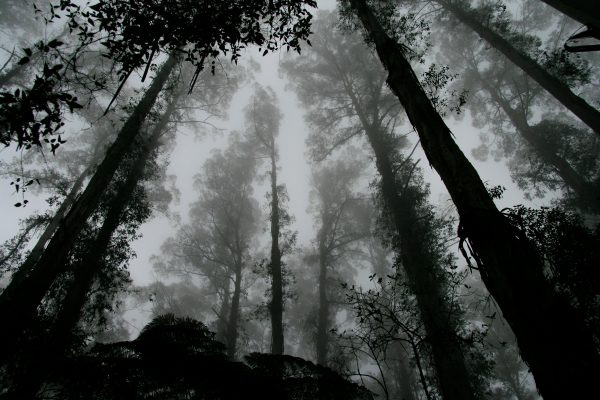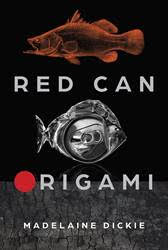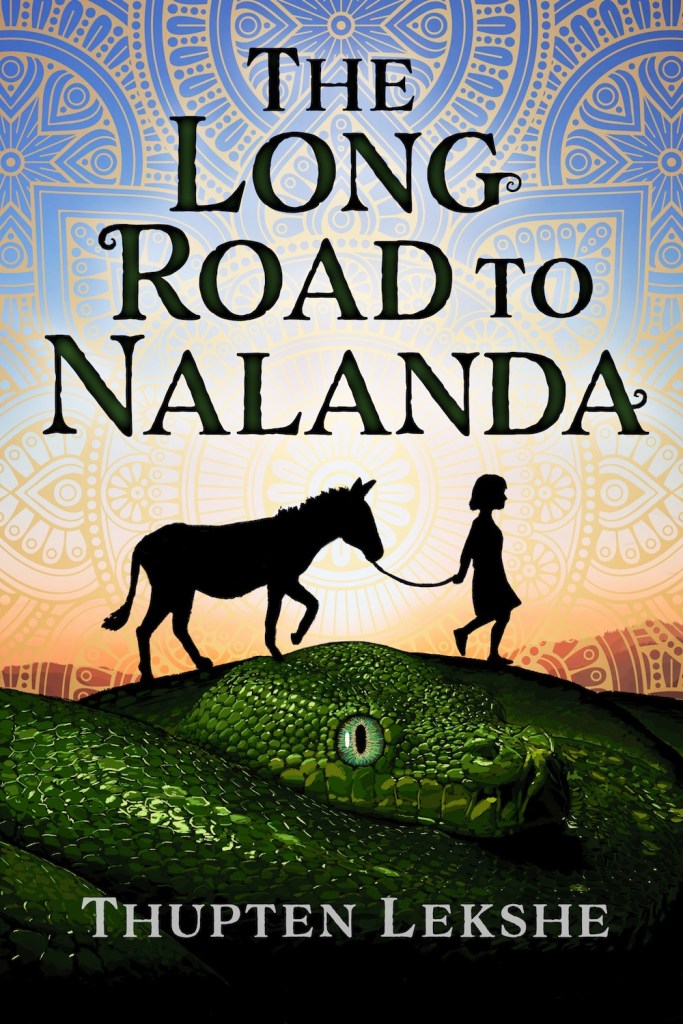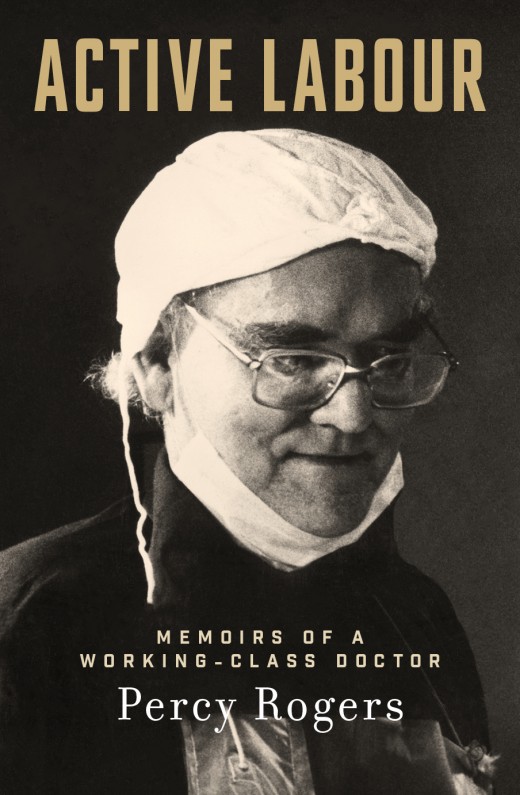A fictional character doesn’t have to be a human or an animal—a dark foreboding forest with a tangle of undergrowth can act as an antagonist, or a force of nature, such as a cyclone that bears down on a town, or an insidious pandemic. On the other hand, there may be a place where a character can go to that provides comfort and respite. A character can be the collective personality of a surging, angry mob, moving and acting as one, protesting or murdering in the streets. Not only acting as a force that antagonises and threatens authority and individual human characters, the accompanying noise, colour and movement enlivens the scene.
Author Kate Grenville wrote in The Writing Book (2010): ‘Characters [in fictional stories] are not people, but they are like people in being, finally, mysterious’. And so, to take Grenville’s contention further, a place or landscape can exhibit human characteristics, mysterious or otherwise. For example, the ‘dark spruce forest’ in Jack London’s White Fang (1906) exhibits human qualities:
Dark spruce forest frowned on either side the frozen waterway. The trees had been stripped by a recent wind of their white covering of frost, and they seemed to lean towards each other, black and ominous, in the fading light.
Jane Eyre, the main character in Jane Eyre (1847), has an affinity with the natural world and the sublime beauty of the moors, a character in themselves – both treacherous and comforting. When a distraught Jane leaves Rochester and Thornfield Hall, she stumbles across the moors, feeling their seemingly human ‘filial’ embrace.
I touched the heath; it was dry, and yet warm from the heat of the summer day. I looked at the sky; it was pure: a kindly star twinkled just above the chasm ridge. The dew fell, but with propitious softness; no breeze whispered. Nature seemed to me benign and good; I thought she loved me, outcast as I was; and I, who from man could anticipate only mistrust, rejection, insult, clung to her with filial fondness. Tonight, at least, I would be her guest …
Lord Byron (1788—1824), the English Romantic poet, conveys his enjoyment of communing with the rawness of Nature.
There is a pleasure in the pathless woods,
There is a rapture on the lonely shore,
There is society where none intrudes,
By the deep Sea, and music in its roar:
I love not Man the less but Nature more
(From George Gordon Byron’s Childe Harold’s Pilgrimage, 1812)
Who can forget Sydney Carton’s famous last words in Charles Dickens’ A Tale of Two Cities (1859) as he faces the guillotine with the shrill of the French revolutionary mob ringing in his ears? “It is a far, far better thing that I do, than I have ever done …” His words are drowned out by the starving crowd baying for blood—a character of mammoth proportions, magnifying the madness. Dickens feared the violent crowd, which he often represented as non-human. He uses the sea as a dominant metaphor for describing the revolutionary crowd as it storms towards the Bastille: ‘a whirlpool of boiling waters … the remorseless sea of turbulently swaying shapes … the ocean of faces where every fierce and furious expression was in vivid life’. This passage conveys the issuing of a force by the ‘boiling’ revolutionary crowd moving as one deadly force. The echoing of the mob’s collective footsteps reverberates across The Channel, threatening the peaceful lives of the Manette and Darnay households in London.
Headlong, mad and dangerous footsteps to force their way into anybody’s life, footsteps not easily made clean again if once stained red, the footsteps raging in Saint Antoine afar off, as the little circle sat in the dark London window.
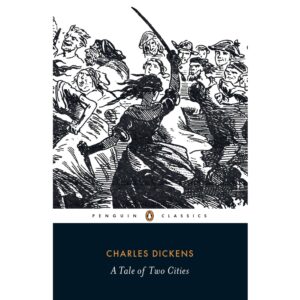 When the quiet corner of London’s Soho is overpowered by a storm, it foreshadows a violent force soon to engulf the idyllic lives of the family as they hear people running for cover. Dr Manette speaks of the storm as the threatening mob, “It comes slowly”. And Carton adds prophetically, “It comes surely”. He announces that there will be “a great crowd coming one day into our lives”, which eerily foreshadows their tragic clash with the revolutionary antagonist in Paris as it grows in tempo, volume and violence, destined to overturn the status quo in France. The volatile nature of the crowd is noticeable after Charles Darnay’s first reprieve. At first, the jubilant ‘great crowd’ carries Darnay in a chair, which is described as a ‘car of triumph’, but the tide turns and runs ‘mad, like the people on the shore’. When the second hearing reveals Darnay’s guilty family secret, the crowd yells for his head, which gives substance to ‘the echoes of all the footsteps’ that finally receive their embodiment in the judging, avenging ‘great crowd’. The Parisian crowd is represented as a collective living monster.
When the quiet corner of London’s Soho is overpowered by a storm, it foreshadows a violent force soon to engulf the idyllic lives of the family as they hear people running for cover. Dr Manette speaks of the storm as the threatening mob, “It comes slowly”. And Carton adds prophetically, “It comes surely”. He announces that there will be “a great crowd coming one day into our lives”, which eerily foreshadows their tragic clash with the revolutionary antagonist in Paris as it grows in tempo, volume and violence, destined to overturn the status quo in France. The volatile nature of the crowd is noticeable after Charles Darnay’s first reprieve. At first, the jubilant ‘great crowd’ carries Darnay in a chair, which is described as a ‘car of triumph’, but the tide turns and runs ‘mad, like the people on the shore’. When the second hearing reveals Darnay’s guilty family secret, the crowd yells for his head, which gives substance to ‘the echoes of all the footsteps’ that finally receive their embodiment in the judging, avenging ‘great crowd’. The Parisian crowd is represented as a collective living monster.
And so, when working on ideas for characters for a novel, it’s always worthwhile thinking outside the traditional human characters, fantastical or otherwise, and consider creating other types of characters such as an angry mob, or a landscape that exhibits human qualities, which could be an unsettling and unrelenting force of nature, or a gentler place in which a character can commune and feel ‘filial fondness’. As a long-time editor and manuscript assessor, I am often dazzled by unique character creations in novels that I assess and/or edit.
Is your novel ready for an assessment?
Has it been sitting on the back-burner for too long?
Would you like to have your characters analysed?
Having your manuscript assessed and edited before submitting it to publishers can prove invaluable. These days authors face heavy competition to be offered a publishing contract, so your writing needs polish. An objective assessment and edit of your manuscript can be costly, but if you take the plunge, your submission will have a greater chance of being successful.
Whether your writing project is a complete manuscript or a work-in-progress, I would be delighted to receive an email (denise@denisemtaylor.com.au) or a message from you via my contact page with a brief overview of your project and I will respond within a few hours.
Featured photo by Phoebe Strafford on Unsplash

